Visual Arts
Zsófi: Welcome to PUHA podcast, which stands for Performative Unity in the Hungarian Arts, produced for HowlRound Theatre Commons, a free and open platform for theatremakers worldwide. We're your hosts, Zsófi and Bíborka.
Welcome to all of our guests and thank you for joining us on this rainy Budapest Saturday afternoon.
Gyula Muskovics: My name is Gyula Muskovics, and I'm part of the group Hollow. We are at Tomi’s apartment because we had a party last night in our studio and it's a mess now and we can't go there. It’s in Budapest.
Zsófi: And so maybe the two other people in the frame, if you'd like to introduce yourself.
Viktor: Okay, so I'm Viktor. I'm also part of the Hollow group.
Tomi: I'm Tomi.
Eszter Kálmán: Hi, I'm Eszter Kálmán and I'm a set and costume designer and I'm sitting here in my apartment with my dog who might be a bit noisy at some points.
Bíborka: What's your dog's name?
Eszter: Yuri.
Zsófi: Cool.
Beatrix Simkó: I'm Beatrix Simkó, called Trisha, and I'm at home in my flat in Budapest.
Zsófi: So we have some quick questions that we would like you to answer. The first one is: What is performance—or performance art, however you want to name it?
Gyula: Probably the interesting thing about performance art is that it's always on the verge of different genres, the visual and the performing arts. This is probably my one sentence answer to the question.
Eszter: My one sentence would be that it's the art of the present—or the present and the presence, or something like that.
Zsófi: Well, you are doing really well so far with the one sentences.
Beatrix: I would say, for me it's like an idea unfolding, a concentrated physical action which is witnessed by someone or by an audience done anywhere, actually.
Zsófi: What's your first encounter or the most definitive encounter with performance art that you remember or that still may influence you?
Gyula: For me, it was a piece by Pál Frenák called Csajok. And if I think back, I am not sure I would like it now. But back then, I think I was around fourteen, I was really surprised. But it was more like a dance piece and not performance art.
Viktor: I'm from the countryside where I didn’t really see that much performance art back then. My first encounter with it made me decide that I want to work with the body.
Tomi: I remember that I attended a short story reading in a theatre when I was like eight or nine. It was a Géza Hofi short story reading, I think.
Beatrix: For me, I think it was around fifteen and that was the first time I went to MU Theatre. And this was the piece by Krisztián Gergye. And this was something I really haven't seen before because I've been to Trafó, I remember at that age, and also to different theatres. But this was something that I couldn't put into the other genres, and this was for me, the first performance visually and movement-based performance experience.
Eszter: For me, I remember a lot of theatre pieces that I saw in my high school years. But as a performance art piece that I can remember—and I'm sure it wasn't the first one but the first one I can still remember of—was during university. And it was done by a student that was her degree piece and she was from Singapore. I think her name was Tara Tan, and she was doing a piece about her identity and Asian identity in the U.K., and she was peeling potato. The whole length of the performance, she was peeling potatoes and lastly, she had a scarf on her head. And then by the end of the performance, it turned out that she bleached her hair and became a blonde English person by the end of her performance. And that's my first memory of the performance that we defined a second ago.
Bíborka: We would really appreciate if you could talk a little bit about how performance or body-based work found its way into your art. Maybe it's been there from the beginning or maybe not. And it's interesting that I think from all of you, it was only one person who said that their first moment with performance art was something that you were reading, right? Something that involved them. So how did it come about that you are doing this kind of work, either as a collective or an individual?
Viktor: First, I wanted to become an actor but then, I was taken to the Budapest Contemporary Dance School. From this moment, it was really obvious that I want to work with my body, and I have to cast things through it and through movement.
Back then, I didn’t know what contemporary means but I knew through parties that I can dance, so l I applied and I was taken. From that moment, I had to learn how I can switch everything what I used to say out loud—because I studied theater in highschool—, to the body. Now, we are a collective, and it's different, because we are coming from very different backgrounds.
Tomi: For me, the first attempt to do something like a performance was with you. Before that I would've never thought that I would do anything with performance. Ok, it’s not entirely true. I'm a game designer and I work with multimedia and in the past I did live gaming. But this I wouldn’t call performance.
Bíborka: What do you mean by live gaming? Like Twitch stuff or?
Tomi: There is another artist group that I'm part of, called Rites Network, and we used to do experimental games together. The live gaming is when we are playing the games that we design live, basically. Which is a thing that we are doing with Hollow, too, sometimes during the performances: We build these games virtually but there's also a choreographic part, in which we use game dynamics. What we are doing is playing basically—not gaming but playing.
Gyula: Yeah, we are trying to create game-like environments and bring the mechanisms of the virtual space into physical reality. I find this quite interesting because I have a background in curating, and I used to do exhibitions. I have always felt that the format of an exhibition is just too static for me, and I was more interested in something more immersive and more dynamic. I think when we the three of is started to work together, it was a really nice moment. Our first performance came about very intuitively. We didn't have so much time to prepare, but it was quite a big success—not only for the audience but for us as well (it was in Trafó House of Contemporary Arts in Budapest). We just realized, “Wow, this is the format what we've been imagining or trying to realize individually.”
Zsófi: Cool. Well, do the two other of you want to say a couple of things about how you found your practice lead towards performance? Why did you engage with it?
Beatrix: So, my background is dance and I was doing it from childhood. It's a very typical but later on I continued, and dance was always my vocabulary but never in the institutional way. And when I got to the art university—which was MoME for me as well, as the guys mentioned—until then it was for me really more the dance and the movement vocabulary. But there, I studied at the Media Design Faculty and the head of this department was János Szirtes. After the graduation, we started to work together. So this was a big impact on my work that we collaborated and did many performance art projects which involved the body and were body-based and quite the simplicity describes these performances. And later on, this kind of attitude towards performance art which I would say—so he's an older generation and performance art is something that he did through throughout his life and also with other international artists.
It derives from this ’80s and ’70s performance art that we know of. And this way of performativity then in another way, also came into my work as itself and also to the dance and movement-based work. So, I think I was always interested in different kind of qualities and movement and dance qualities. And this kind of performance made it possible that the range of working with the body can be really a range, a spectrum, and I'm totally free to use it, and not only the dance vocabulary is the way to use it. Although, this is really something that I'm coming from. So, this was ten years ago when we started this collaboration and since then, I'm also doing very diverse things, from very simple—in a way without any apparatus performances—to combining performances with visual art. And also, in the dance work, there are things that—I wouldn't say that this is only dance—but have characteristics from performance or performativity.
Eszter: I work as a set and costume designer and that's my main thing here, living in Hungary. But from time to time, I'm very interested in the power of telling stories through theatrical elements such as light and the set itself or the non-human body elements of theatre, really. So, I'm really not body-based as you are. I'm quite the opposite, but that's my interest. My primary interest these days is how to tell stories through noises, for example.
Zsófi: I saw one of the videos of Eszter's noise performances where they make a whole family drama out of domestic tools in the kitchen. It's really cool.
Bíborka: The Hollow guys and Trisha, you were talking more about obviously the body, or well, depends, and how you find your way to that. And then Eszter, it's actually the absence of the body and everything else surrounding the body. So, what media do you usually start developing your work in? And then how do you invite the body or body-based stuff, or other media into your process, the Hollow people?
Gyula: I think the most interesting thing about how we work is that the whole process is based on improvisation, experimentation and intuition. So we would just spend time together and work basically with our worlds. We are creating these alternative universes that can appear, I think, in many different ways, in many different contexts. The basis of our work is shared imagination: we just talk about random stuff but also do a lot of research. In the research phase of our new project, which is about communities—including us as a collective—, we do a lot of performative experiments and we create challenges for ourselves that we have to go through together.
Viktor: Basically, we are referencing our own lives and from that, we kind of convey speculative things—"What would happen if,” and things like that.
Gyula: Yeah, we are just speculating, actually.
Viktor: Yeah.
Gyula: It's a very important part of our work that we are very good friends, and I think that world-building is already an important thing in friendships. You create this small universe around yourself, which is about how you imagine the world together. For example, one project we did, we started with Viktor’s fear of death. Back then, he was talking about his fear of death because there is a point in everyone's life when they realized that they will die at some point, and it's a very unpleasant period. For me it was around twenty-eight. I remember also for Tomi and for Viktor, it was when we started to work on our piece called Summit. What we did was inspired by our personal encounters with the idea of finitude, but the resulting piece can be interpreted in a wider sense, in the context of climate change or what the possible futures of the planet may hold.
Or to say another example. The whole idea for our new project about communities came up when I was doing research connected to my PhD in Tbilisi, last summer. Tomi had this idea to do a project about a collective body, I was very fascinated by the 1980s and 1990s underground queer scene in Tbilisi and we also felt the need to spend more time together. So, we applied for residencies and started to think about this collective body as a network of resistant, smaller units; smaller bodies.
Viktor: I would just like to add that working in a group is by nature really intuitive. You think of something and then you say it and there's and instant feedback from the others, which is a really nice way to work.
Zsófi: Trisha or Eszter, how does it work for you when you start a new project?
Eszter: Well for me, it's usually starting with the actual question: Can I tell a story through noises? And then, that's the form. Or, you know what I mean? I had a performance called The Lake, where I wanted to examine the differences and similarities between puppetry and dance; how choreography is the same thing with the body, even if it's not a human body but a puppet's body. So, for me, I think the original issue or my interest is always the form, primarily. And then from the form, hopefully there is more content. But actually, I'm starting from the other way around. How is, like, a talking set? How a set can tell a story without people being in it.
Bíborka: I didn't see or experience this piece—the sound one that you're talking about. So, how does the audience go into that or engage with that? Is it like installation stuff? Or is it a digital thing or?
Eszter: No, it's me and my husband onstage. It's almost like a laboratory set up, so it's a very long table and it's called Domestic Noise, the piece. And it's all domestic objects on the tables from a bathroom, through a kitchen, to the dining room, objects-wise. And we go through our story or moments of our marriage through sounds. Almost everything we do is recorded as well so it works as a looper. So, we can do light layers of sounds on top of each other, and we can create music from the sounds as well. And we also sing at one point. But I think it's very important that it's us, and that it has to be very truthful to us and it's very honest.
Bíborka: I think this is a good connection to Trisha, probably, because I remember that when you were giving your one sentence definition about performance, you mentioned presence.
Beatrix: The process starts always with an idea and if the context makes it as a one-time action, I mean a performance art or a performance, then in that case I kind of never rehearse. I find out the elements which can be also the dramaturgy in the sense that what is happening after each other, and then it happens on the spot, in the moment, and I don't rehearse. When I'm creating more dance-based, movement-based works, then it's another setting because then I rehearse, sometimes for a very long time or in different periods which can be also half a year apart from each other. And then I know that it's probably going to happen in a theatre and in that case, I know that I'm always dealing with bodies or body bodies, and probably there is going to be some kind of visual design which is created by my partner most of the time, Dániel Dömölky.
We operate most of the time with lights. So light design is always the main element, not only in the way you use the equipment of the theatre but how additional objects can be also... lighting objects can be part of the visuality. And sometimes it also comes to video. And then in this medium, I'm also working with dance films, so dance videos, which have nothing to do— or not always have to do anything with—the dance work, so far. So actually, these media for me link in different levels and settings. Currently, I'm also planning a dance video series. Yes, which is going to happen in the upcoming months. And sometimes it's guerilla, so it's happening on the street.
For example, I did a dance film two years ago which happened during a residency in Stockholm called In Between, and this was totally guerrilla. There was nothing set in before, so we just went there and created the images that we composed or choreographed before. So yeah, I'm dealing with very different stuff and context concerning also the location and the actual work. And most of the time, I work with different people—like my partner is permanent, so we’ve worked for a long time together. But concerning dancers or dance colleagues, it varies from project to project. This is always a challenge, but on the other hand, this is also a platform to build a new community and to define the language or the dance language from time to time, from the ground.
Bíborka: Listening to all of you, I had this question in mind about—take it in any way you want to answer it, or you don't need to either—but what's your performance dream or something that you really want to make work about? Or maybe you have a specific idea that you've been meaning to realize or develop for a long time?
Gyula: What I know for sure is that in our performances, usually Viktor is doing some kind of dance, Tomi is gaming, and I'm always doing something more static, or I speak or write. In our next project, we would like to do something which is very different, and we don't know how we will achieve this. We will probably just not be present in our performance. This is actually the idea that we are not there.
Once there was an event, which now we call a performance and its title is Camp, but it was actually us and a few friends coming together during COVID. It was ten people because that was the regulatory limit. We work a lot with role-playing and throughout Hollow's history, we've developed and created many different characters inhibiting these fictional roles that we organize our performances around. And we just gave character cards to people and tell them that they can embody any of them or embody a mix of their inventions and the characters, or just be present. We had dinner and some drinks, and it became quite interesting because everyone took it very seriously. Everyone would expect at the beginning that we would just give them instructions and it would be a role-playing game, but we didn't say anything. It was a nice moment we could just share. But still, people started to stick more and more to their fictional characters. One of them, for example, had a mask in which she couldn't even open her mouth, and she would wear it for six hours.
Beatrix: When you first asked this question, the first thing that came to my mind was that last year when I was pregnant, it happened that I had two performances which were very long—and I mean long in the sense that normally a work of mine is like seventy minutes long, maximum. So, both of them took like two and three hours long, and this was, for me, a new experience: doing something for a longer time and with a different kind of concentration in the body, and it's intriguing. In the future, I would really test the limits and even if it comes together with the topic. And also, there are topics that I'm so interested in, but I don't find the context—I mean also, the financial way to realize it. What do I need? This support and this kind of things sit on the shelf. So, I know that this interests me, but I really have to find a context for it, so I just wait, and maybe years later I can realize it. So this is also a strategy, how I try to get by with these circumstances or systems that I'm working with, also with applications and the context.
During the Impulstanz Festival, which is a very big venue in Vienna for twenty-five years now—and this was part of a residency and also a two-year program. At the end of a two-year program, a performance series took place in the Leopold Museum, if you are familiar with its spaces. There were three or four rooms that we occupied to stay with the different performances. There were ten artists involved, and I created a performative act on the top of a huge [column]—it's quite like this in the museum, a very huge, two or three meters long. And it’s called Island, and I was dealing with very soft and little movements and changing of the movement during these two hours. I was already not alone in my body because my daughter was inside, and we did it together. And there were, in the setting, also ladders—which was interesting because it was part of the visual, but people thought that they could climb up, but it wasn't intended but some of them tried. So it was also funny in a way that it wasn't intended, but they participated in the set. So this was one, and the other one was also in a gallery space, in a small gallery in Budapest. And it was like building a so-called time capsule, and it was participative in a way that people left messages in the space, and they dropped it into a box. And this box is closed for eighteen years, and these messages will end up, after eighteen years, in my daughter's hands.
Eszter: Apart from my design work, I've been creating these installation arts with Juli Balázs and András Juhász and Gábor Keresztes, sound and visual artists. Juli is a set designer. And we've been doing these very big-scale installation arts. The first one was called Infinite Dune, that won the Prague Quadrennial Countries and Regions first prize, and the second one was last year at Trafó. It was called Water Fields, and that is also a Trafó-sized installation. So, I'm planning on continuing working with them on new installation arts. So I guess my interest is towards fine art more so than performance art lately.
Bíborka: And how did you develop the concept for the Water Fields one?
Eszter: We developed the concept with the Juli Balázs together. Well, it was an EU project that Trafó was participating in. And Trafó invited people to create, not just installation, but performance art also. It was very free and wide. And they invited me, and they invited Ármin Szabó-SZékely, who is a dramaturg, and we both wanted to collaborate with Juli. So we all joined together and the project itself was called Liberty. I think it's in twelve European countries, and it's a project about migration and artistic answers or artistic approaches towards that problem. Trafó decided that for the Hungarian part, they wanted to narrow it down to the Greek migration period of time, which happened in the ’50s in Hungary.
We decided that we wanted to create something that is a very open piece for associations towards traveling and the sea and the ocean and the power of the sea. How people from the outside can just enjoy the sea or the waves or the power of the water, and how from another perspective the same thing can be a very dangerous and also very powerful effect for anybody who hasn't seen it. The installation is a huge fabric that has sixty-eight peak points in the theatre space that can be moved by audience members, so it can wave the whole thing. And it's twelve meters wide and twelve meters deep, and it’s a full video projection on it. The soundscape is from the outside where you can look at it from an upper perspective and then you can go underneath it, and there is another soundscape underneath it in headphones.
Zsófi: We would like to wrap up with one last question, and I would like to ask Trisha to answer first in case she needs to go because of the little baby. So we were wondering, who are some inspirational artists for you that have been defining throughout your career or right now?
Beatrix: Okay, I start. I have inspiration, recently, and not throughout. I have a performance artist called Simone Forti, and I'm amazed by the fact that she is over seventy and she is still active. Throughout her career she was active in body-engaged performance art, and this is something I admire and find very inspirational. I’m also very much, when in theatre, in the sense of theatre where we say there are narratives and there are texts and also visuals, so we say it's a theatre piece. There are elements when I say it's on the border of performance and I had, a few years ago, an experience with a Norwegian group called Suzy Van, a performance that I saw which was really on the border of theatre and performance. And I liked it very much.
Zsófi: Thank you.
Eszter: For me, it's Robert Lepage, who is a Quebecian Canadian theatremaker, whose interest is in theatre but in terms of visuality, or he's interested in how to tell the story in the best visual form. But sometimes, he can even break it down to seeing a performance or a production, let's say a production, it can happen that each scene is in a different visual form because he thinks that for that scene, it's the best shape and form. And I love that freedom.
Gyula: Probably the artist called Ryan Trecartin. He's an American filmmaker and video artist, and he's one of the first artists who tried to somehow translate the logics of the internet into performances. He and his collaborators, such as Lizzie Fitch, who's a set designer, have made a lot of improvisation-based, role-playing-like performances that serve the basis for their films. Perhaps, because of the craziness of their stuff, the narratives that unfold are always multidirectional and they don't necessarily make one certain sense. We also like to use this as a method, to make the audience step out of their rational way of thinking. I think this is a very good tool for creating immersive experiences.
Viktor: We also have a lot of inspirations from pop culture, too, like Harry Potter.
Gyula: Yeah, true.
Viktor: Matrix, pop songs, of course.
Gyula: Addams family, Halloween… But there are more and more artists or collectives working with similar topics and media and it's interesting. We had a collaboration last year with a collective called OMSK Social Club. They're a Berlin-based group, and it was very interesting. And we are all surrounded by artists. Our best friends are artists, and we are very inspired by them, actually. So that's probably the main source of inspiration for us, what we get when we go to Trafó in Budapest and see performances by people like Csaba Molnár or Tamara Zsófia Vadas or Imre Vass. They're all amazing people.
Viktor: And people from the visual arts scene, such as artists from AQB (Art Quarter Budapest).
Gyula: Yeah, yeah. We are kind of becoming a community. Also because of COVID, I think that the circle we are part of is just growing bigger and bigger because I think people have more focus on their local communities than ever before. And yeah, I really enjoy being in this community of one hundred people and being inspired by them. And also, through collaborations. We’ve just had a collaboration with the artist duo Lőrinc Borsos and textile designer Csenge Vass in the Studio of Young Artists’ Association (FKSE) in Budapest.
Zsófi: Thank you. I think we have come to the end and thank you so much for having this conversation with us. It was really great to get to know you and to hear your thoughts and experiences. It was very inspiring.
This has been another episode of the PUHA podcast. We are your hosts, Zsófi and Bíborka. This podcast is produced as a contribution to HowlRound Theatre Commons. You can find more episodes of the series and other HowlRound podcasts in our feeder on iTunes, Google Podcasts, Spotify, and wherever you find your podcasts. Be sure to search HowlRound Theatre Commons podcasts and subscribe to receive new episodes.
If you love this podcast, post a rating, and write a review on those platforms. This helps other people find us. You can also find the transcript for this episode, along with a lot of other progressive and disruptive content on howlround.com. Have an idea for an exciting podcast, essay, or TV event the theatre community needs to hear? Visit howlround.com and submit your ideas to the commons.

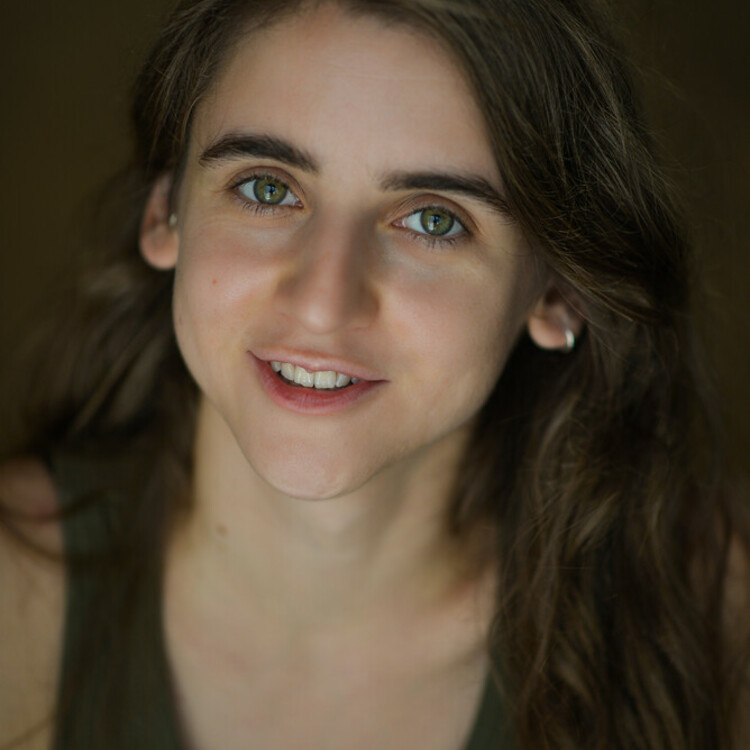
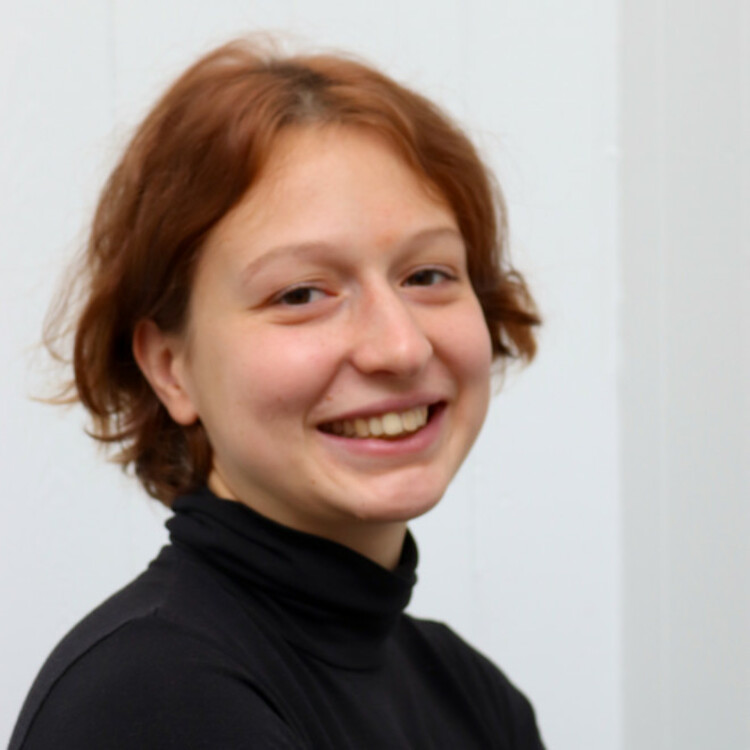
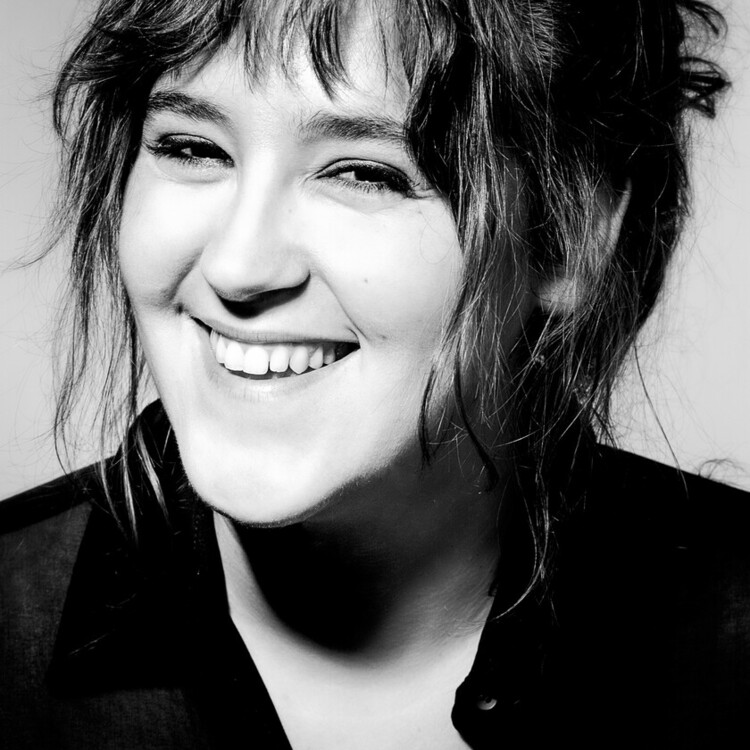
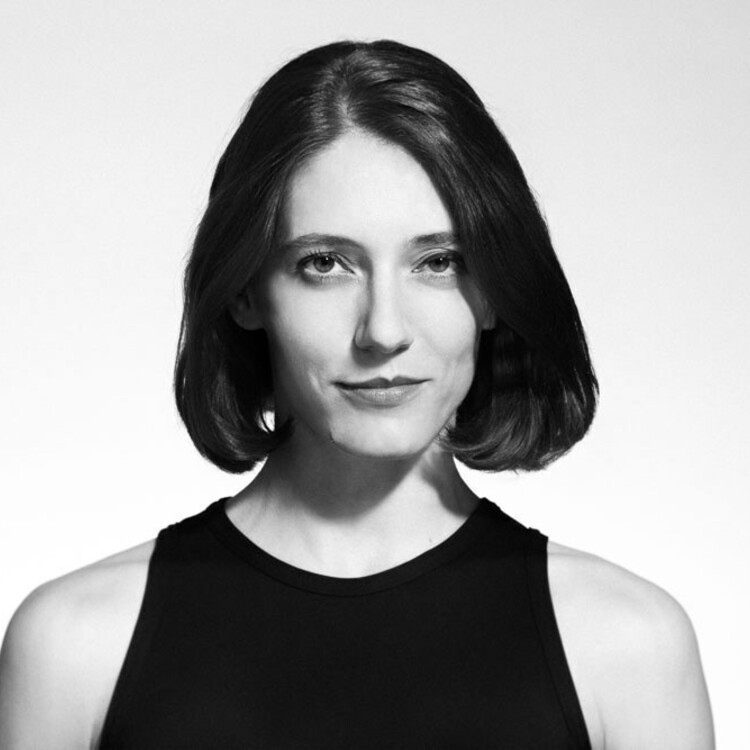
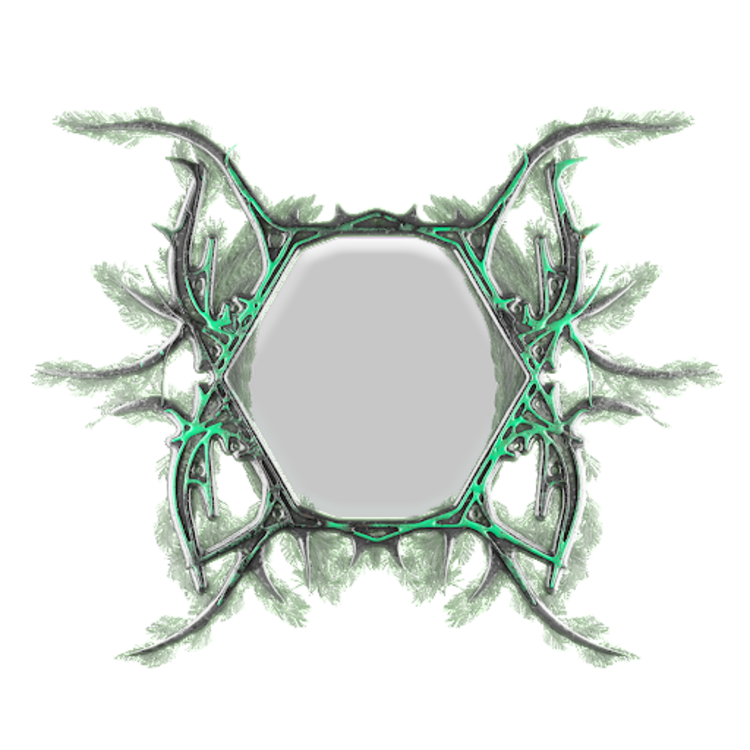
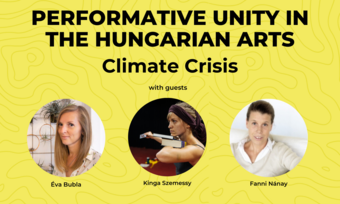





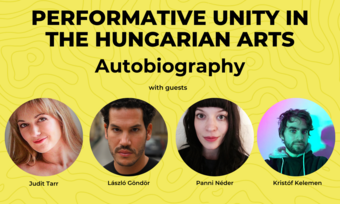




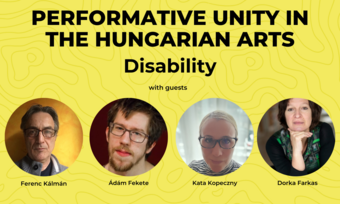




Comments
The article is just the start of the conversation—we want to know what you think about this subject, too! HowlRound is a space for knowledge-sharing, and we welcome spirited, thoughtful, and on-topic dialogue. Find our full comments policy here